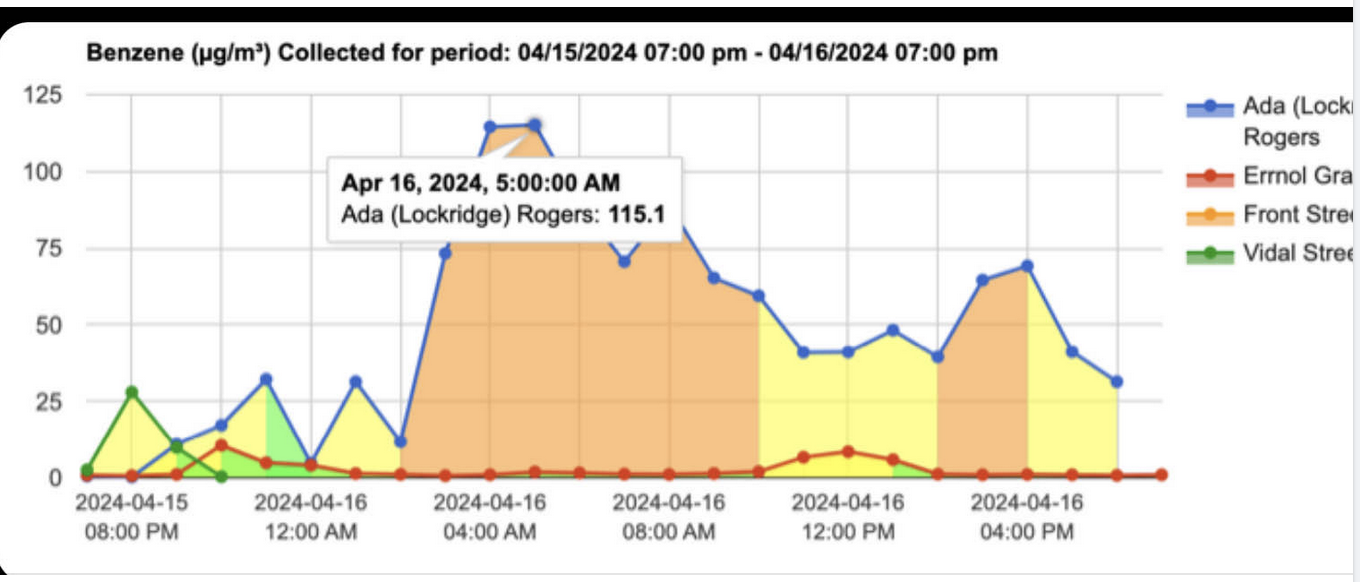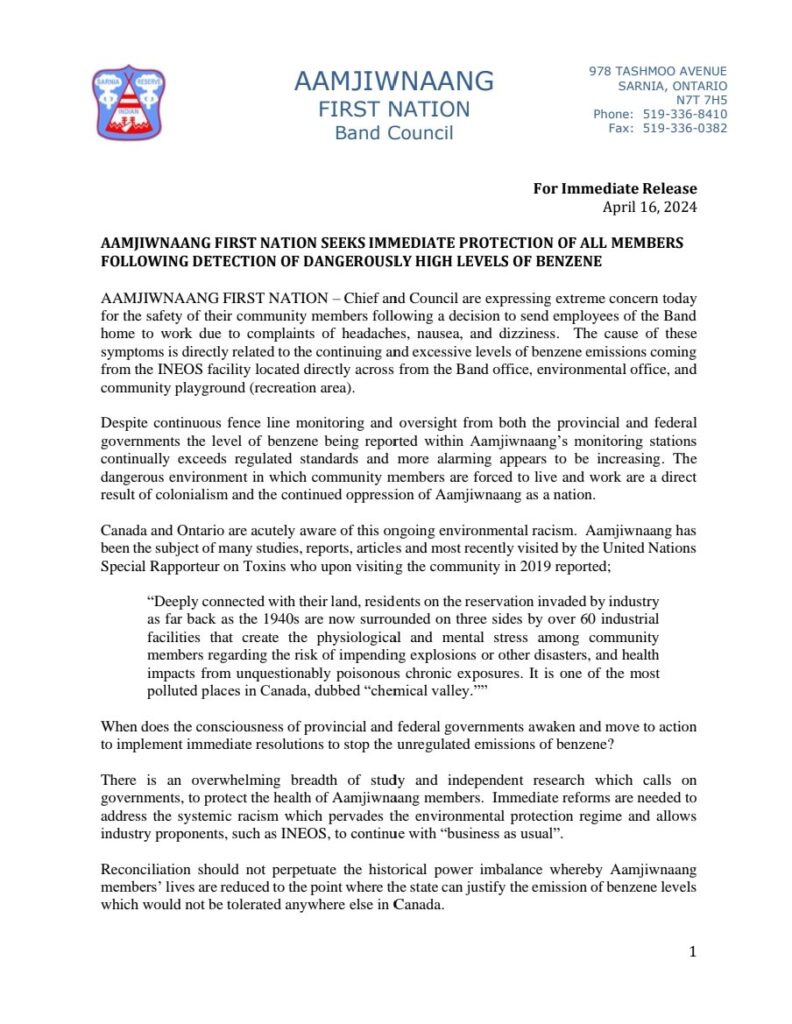Lambton lands part of 30×30 project

Aamjiwnaang calls for INEOS plant to be shutdown as benzene levels soar
April 17, 2024
The leadership of the Aamjiwnaang First Nation says the federal, provincial and municipal governments to immediately shutdown the INEOS after what one resident called an “environmental assault.”
That after the band sent its employees home with headaches, nausea and dizziness Tuesday. They checked environmental monitors and found the levels of benzene was extremely high.
“The cause of these symptoms is directly related to the continuing and excessive levels of benzene emissions coming from the INEOS facility located directly across from the Band office, environmental office and the community playground,” Chris Plain said in a news release issued on Twitter.
Plain says despite continuous monitoring by both the provincial and federal government “the level of benzene being reported within Aamjiwnaang’s monitoring stations continually exceeds regulated standards and, more alarming, appears to be increasing.
“The dangerous environment in which community members are forced to live and work are a direct result of colonialism and the continued oppression of Aamjiwnaag as a nation,” the letter continued adding there have been a number of studies highlighting the ongoing problem.
“Immediate reforms are needed to address the systemic racism which pervades the environmental protection regime and allows industry proponents such as INEOS to continue with ‘business as usual.'”
Plain called on all levels of government to shut the plant down.
Aamjiwnaag employees are working from home for a second day.
The INEOS plant in Sarnia produces styrene monomer, according to the global company’s website. It is used as a raw material for a number of products in such industries as Automotive, Electronics, Household and Construction for things like medical devices, automotive components and toys.
Environmentalist and Aamjiwnaang resident Ada Lockridge was was one of the first to raise alarm bells. In 2014, Lockridge and the late Ron Plain sued the provincial government over the cumulative affects of pollution from nearby plants on the community.
Lockridge now has a monitor near her home. Three days ago, she noticed the benzene levels starting to climb. By Tuesday, it was 22 times the allowable limit at the band office. “This is the benzene level for today by the Band Office,” she posted on social media. “They shouldn’t even be in those buildings. This is wayyyy above any excepted levels. 0.45 micrograms is the allowable amount by the Ministry Of Environment. So that’s 22 Times over the limit.”
On social media, the Aamjiwnaang community was looking for answers from Lockridge and voiced concern about their health.
“This environmental assault,” said Marina Plain.



Lambton lands part of 30×30 project
July 11, 2025
Read More

No PW park fees for severed farm lots
July 11, 2025
Read More

Learning about wood turning at Petrolia’s Art in the Park
July 11, 2025
Read More

Model trains and planes take over Mooretown Museum
July 11, 2025
Read More
